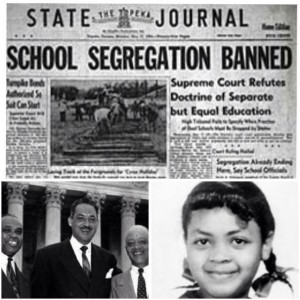The main purpose of the Supreme Court in the Federal government is to create checks and balances. If the federal judiciary believes the other branches of government are breaking the law or violating the U.S. Constitution, these judges can exercise "judicial review". The main event that established judicial review (and what is considered to be one of the most famous Supreme Court cases) was Marbury v. Madison.

In this case, William Marbury wanted the federal court to issue a Writ of Mandamus, also known as a court order. Marbury wanted Secretary of State Madison to be required to file Marbury's commission to be a judge, as directed when John Adams was President. John Marshall, who was Chief Justice, wrote the court's opinion on February 24, 1803, that while the law stating Marbury should get his commission was illegal, the Federal Courts could decide if the other branches of government violate The Constitution.Until this decision, it was not clear whether the Supreme Court (and other federal courts) had this power.
 Another famous court Supreme Court cases was Brown v. Board of Education of Topeka, Kansas. According to the 14th Amendment's Equal Protection Clause, "No State shall make or enforce any law which shall abridge the privileges or immunities of citizens of the United States; nor shall any State deprive any person of life, liberty, or property, without due process of law; nor deny to any person within its jurisdiction the equal protection of the laws."
Another famous court Supreme Court cases was Brown v. Board of Education of Topeka, Kansas. According to the 14th Amendment's Equal Protection Clause, "No State shall make or enforce any law which shall abridge the privileges or immunities of citizens of the United States; nor shall any State deprive any person of life, liberty, or property, without due process of law; nor deny to any person within its jurisdiction the equal protection of the laws." In the 1890's the Supreme Court ruled in the case of Plessy vs. Ferguson that there could be racial discrimination so long as the facilities were "separate but equal." In the 1954 Brown vs. Board of Education case, attorney Thurgood Marshall argued that separate facilities were always unequal. Chief Justice Warren wrote in a unanimous opinion that the Plessy case was wrong and denying people the right to use facilities because of their race violated the 14th Amendment and was therefore unconstitutional. So, the Brown vs Board of Education cause overturned Plessy vs. Ferguson and opened the way for later challenges to discrimination based on the 14th Amendment's Equal Protection Clause.

No comments:
Post a Comment